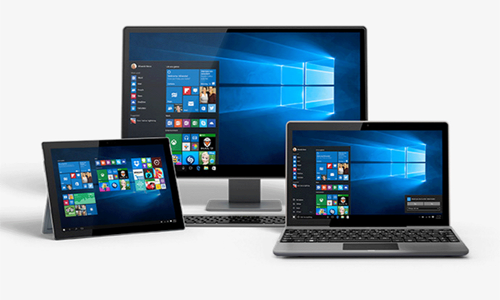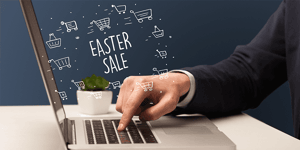When you think of 'upselling' you might imagine a pushy salesperson with pound signs lighting up his eyes thinking only about the commission. But upselling doesn't have to only benefit the sales rep. If approached in the right way it can greatly benefit not only your business but also your customers. By introducing customers to additional items that complement their purchase you can demonstrate your product knowledge while enhancing the customer experience. Happy customers are repeat customers!
If you've ever heard: 'Would you like to add chips to that?' and thought, yes, actually, I do, then that is a great example of upselling that positively benefits both you and the business you buy from. If you're a small business owner and you have no idea where to start we'll run you through some areas to think about when learning how to upsell products so you can start improving sales and customer experiences!
What is upselling?

Upselling is a sales technique that persuades customers to purchase a more expensive item, upgrade to a premium service or purchase additional items. Upselling can increase your overall basket size.
eCommerce and retail sellers alike often combine upselling and cross-selling techniques to increase revenue as much as possible. There is room for both in most businesses.
Why should my business be upselling?
Most businesses dislike the thought of pitching a sale to a customer and not many customers like enduring a sales pitch but, when done correctly, both parties can have a positive experience. Studies show that upselling increases overall revenue by 10-30% on average. That's quite a nice bonus, especially for small businesses!
You might not be sold on upselling yet so let's go over some of the pros and cons that come with it:
Pros
- Maximises overall basket size
- Boosts profits
- Introduces customers to new products and premium services
Cons
- Can seem pushy
- If products suggested are irrelevant you could lose the sale
- Staff would need training and websites would need setting up (time-consuming)
The potential to increase profits for any size business trumps any potential downsides so we think learning how to upsell products is a great opportunity for every brand!
Best practices when upselling

So you're intrigued and perhaps want to start implementing some upselling tactics in your business. But, there is definitely a right and wrong way to upsell products so careful footing is advised here, let's have a look at some of the best practices you should observe when setting up your upselling strategy.
Understand customer needs
Understanding what your customer wants and needs is tricky but can be done. If you sell through the likes of BigCommerce, Shopify or WooCommerce (we integrate with them too!) you'll be able to see what products customers view most. By doing a little research you can get an idea of what products a particular shopper may be interested in and then can suggest the most relevant products.
Dell was one of the first companies to do just that. They created a 'Help Me Choose' feature which creates personalised recommendations based on the tech you've viewed before. This way they can show you other products you may be interested, in a price range that suits your budget - very clever!Comparisons work
Lots of brands favour the comparison option when presenting customers with an option to upsell. This way their selling technique doesn't come off as pushy and deliberate but instead gives the customer the choice.
Take Spotify as a great example of this - they give their customers the option of a free or premium service. The website shows a side by side comparison of the benefits that can be accessed with each service and allow their users to decide which subscription they would like.
It turns out that more often than not, customers will opt for the more expensive version as long as it doesn't exceed 25% of what they originally sought out to pay!
Be transparent with pricing
Customers are more likely to accept an upsale if they know why the product is priced higher than their original item of interest. No one likes a sneaky surcharge, so demonstrate what the customer is going to be getting for their money. If it's faster, bigger or stronger then let them know! Don't try and push through an upsale of an inferior but more expensive product - that's a surefire way to lose the entire sale.
A clever way of upselling is with Dollar Shave Club they draw customers to their website through their clever brand name. Once customers visit their sleek and professional website they are shown lots of additional products to add to their subscription.
This way they still offer customers a clear and genuine start price but immediately show them other options. They've also hit a gold mine by being in the razor/male shave industry as this is an almost guaranteed recession-proof market!
When should I upsell?

Upselling, as opposed to cross-selling, can be done pretty much anytime your customers are on your website and browsing products. However, the three areas most popular for upselling are as follows:
Before purchase
Here you can use display recommendations on the side or bottom of the product page or even both, showing items that are similar but of higher cost. Before the purchase is also ideal to offer the customer free shipping if their basket reaches a determined minimum spend. This way they will be more inclined to go for the more expensive item!
Here it's also useful to stress that the product the customer is viewing is of a less recent range and show them similar items from the new collection or new arrivals. If you use a website building software with Squarespace you can easily set up these recommendations and they even have tutorial videos that can explain it all in a few minutes!
During purchase
Here you can install pop-up adverts to show the customer other items which might persuade them to increase their basket value. You can also suggest items when the customer views their basket or send abandoned cart emails if they leave your website with a basket full of products.
Sending abandoned shopping cart emails is also a great opportunity to offer a discount if they return and checkout or create a sense of urgency by letting them know a certain item is low in stock. This way the customer is incentivised to purchase from you and you increase the chances of them staying loyal to your brand!
After purchase
After the customer has successfully purchased from you, you can send them a personalised follow-up email to thank them and remind them of upcoming sales or new products being released soon.
This is also a great time to offer special discounts and free shipping on future purchases. By doing so your brand shows that you value your customer's interest in your brand, draw more traffic to your website and hopefully increase the number of repeat buyers you have!
Learning how to upsell as a small business doesn't have to be a chore and increasing your brands revenue should be more than enough incentive to keep you going!
And anyway, if you thought this blog was useful why not try our parcel delivery services? At Interparcel we are dedicated to saving customers time and money, delivering millions of parcels every year throughout the UK and internationally!
Upselling works doesn't it...










 Facebook
Facebook Twitter
Twitter Instagram
Instagram Linked In
Linked In YouTube
YouTube